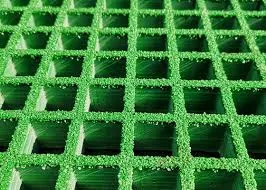
-
 Afrikaans
Afrikaans -
 Albanian
Albanian -
 Amharic
Amharic -
 Arabic
Arabic -
 Armenian
Armenian -
 Azerbaijani
Azerbaijani -
 Basque
Basque -
 Belarusian
Belarusian -
 Bengali
Bengali -
 Bosnian
Bosnian -
 Bulgarian
Bulgarian -
 Catalan
Catalan -
 Cebuano
Cebuano -
 China
China -
 China (Taiwan)
China (Taiwan) -
 Corsican
Corsican -
 Croatian
Croatian -
 Czech
Czech -
 Danish
Danish -
 Dutch
Dutch -
 English
English -
 Esperanto
Esperanto -
 Estonian
Estonian -
 Finnish
Finnish -
 French
French -
 Frisian
Frisian -
 Galician
Galician -
 Georgian
Georgian -
 German
German -
 Greek
Greek -
 Gujarati
Gujarati -
 Haitian Creole
Haitian Creole -
 hausa
hausa -
 hawaiian
hawaiian -
 Hebrew
Hebrew -
 Hindi
Hindi -
 Miao
Miao -
 Hungarian
Hungarian -
 Icelandic
Icelandic -
 igbo
igbo -
 Indonesian
Indonesian -
 irish
irish -
 Italian
Italian -
 Japanese
Japanese -
 Javanese
Javanese -
 Kannada
Kannada -
 kazakh
kazakh -
 Khmer
Khmer -
 Rwandese
Rwandese -
 Korean
Korean -
 Kurdish
Kurdish -
 Kyrgyz
Kyrgyz -
 Lao
Lao -
 Latin
Latin -
 Latvian
Latvian -
 Lithuanian
Lithuanian -
 Luxembourgish
Luxembourgish -
 Macedonian
Macedonian -
 Malgashi
Malgashi -
 Malay
Malay -
 Malayalam
Malayalam -
 Maltese
Maltese -
 Maori
Maori -
 Marathi
Marathi -
 Mongolian
Mongolian -
 Myanmar
Myanmar -
 Nepali
Nepali -
 Norwegian
Norwegian -
 Norwegian
Norwegian -
 Occitan
Occitan -
 Pashto
Pashto -
 Persian
Persian -
 Polish
Polish -
 Portuguese
Portuguese -
 Punjabi
Punjabi -
 Romanian
Romanian -
 Russian
Russian -
 Samoan
Samoan -
 Scottish Gaelic
Scottish Gaelic -
 Serbian
Serbian -
 Sesotho
Sesotho -
 Shona
Shona -
 Sindhi
Sindhi -
 Sinhala
Sinhala -
 Slovak
Slovak -
 Slovenian
Slovenian -
 Somali
Somali -
 Spanish
Spanish -
 Sundanese
Sundanese -
 Swahili
Swahili -
 Swedish
Swedish -
 Tagalog
Tagalog -
 Tajik
Tajik -
 Tamil
Tamil -
 Tatar
Tatar -
 Telugu
Telugu -
 Thai
Thai -
 Turkish
Turkish -
 Turkmen
Turkmen -
 Ukrainian
Ukrainian -
 Urdu
Urdu -
 Uighur
Uighur -
 Uzbek
Uzbek -
 Vietnamese
Vietnamese -
 Welsh
Welsh -
 Bantu
Bantu -
 Yiddish
Yiddish -
 Yoruba
Yoruba -
 Zulu
Zulu
high pressure fiberglass pipe
High Pressure Fiberglass Pipe An Overview
High pressure fiberglass pipes have emerged as a leading choice for various industrial applications due to their strength, durability, and resistance to corrosive environments. These pipes are manufactured using advanced composite materials that blend glass fibers with thermosetting resins, resulting in a lightweight yet robust solution capable of withstanding extreme pressure conditions.
Advantages of High Pressure Fiberglass Pipes
One of the primary advantages of fiberglass pipes is their excellent resistance to corrosion. Traditional materials such as steel and concrete often suffer from rust, deterioration, and chemical reactions when exposed to harsh environments. Fiberglass pipes, however, are inherently resistant to chemicals, making them ideal for transporting aggressive fluids like acids, salts, and solvents. This characteristic significantly reduces maintenance costs and extends the lifespan of the piping system.
Another notable benefit is the lightweight nature of fiberglass pipes. Weighing significantly less than their metal counterparts, these pipes are easier to handle, transport, and install. The reduced weight contributes to lower transportation costs and quicker installation times, allowing projects to be completed more efficiently and with fewer labor resources.
High pressure fiberglass pipes are also designed to handle extreme conditions. They are engineered to withstand high internal pressures, making them suitable for applications in oil and gas, water treatment, chemical processing, and more. The ability to maintain structural integrity under pressure is crucial, especially in sectors where safety is paramount.
Applications of High Pressure Fiberglass Pipes
The versatility of fiberglass pipes allows them to be utilized in a wide range of applications. In the oil and gas industry, they are commonly used for transporting crude oil and natural gas under high-pressure conditions. Their resistance to chemical degradation ensures reliable performance over extended periods.
high pressure fiberglass pipe

In water treatment facilities, fiberglass pipes are often employed for transporting treated water and wastewater. The non-corrosive nature of fiberglass is especially beneficial in preventing contamination, ensuring the treated water remains safe for consumption and use. Additionally, their ability to resist biofouling makes them an ideal choice for such environments.
Fiberglass pipes are also gaining popularity in the renewable energy sector, particularly in geothermal and wind energy applications. They can be used for transporting fluids in geothermal power plants where high pressures and temperatures are commonplace.
Sustainability Considerations
As industries worldwide move towards more sustainable practices, fiberglass pipes offer a promising solution. Their long lifespan and low maintenance requirements contribute to reduced resource consumption over time. Moreover, the lightweight nature of fiberglass reduces the energy required for transportation, further lowering the carbon footprint associated with pipeline installation and transportation.
Furthermore, fiberglass pipes can be manufactured with a focus on sustainability by using recycled materials and promoting end-of-life recyclability. This aspect aligns with global efforts towards a circular economy, making fiberglass pipes not only a practical choice but also an environmentally friendly one.
Conclusion
High pressure fiberglass pipes represent a significant advancement in piping technology, offering numerous advantages over traditional materials. Their resistance to corrosion, lightweight nature, and ability to withstand high pressures make them suitable for a wide array of applications across various industries. As the need for sustainable and durable solutions continues to grow, fiberglass pipes are poised to play a crucial role in the future of industrial piping systems. Choosing high pressure fiberglass pipes can lead to enhanced performance, reduced maintenance costs, and a smaller environmental footprint, making them an invaluable asset for modern engineering projects.
Latest news
-
Exploring the Benefits of Top Hammer Drifter Rods for Enhanced Drilling PerformanceNewsJun.10,2025
-
High-Precision Fiberglass Winding Machine for GRP/FRP Pipe Production – Reliable & Efficient SolutionsNewsJun.10,2025
-
FRP Pipes & Fittings for Shipbuilding - Corrosion-Resistant & LightweightNewsJun.09,2025
-
Premium FRP Flooring Solutions Durable & Slip-ResistantNewsJun.09,2025
-
Premium Fiberglass Rectangular Tanks Durable & Lightweight SolutionNewsJun.09,2025
-
Tapered Drill String Design Guide Durable Performance & UsesNewsJun.09,2025









